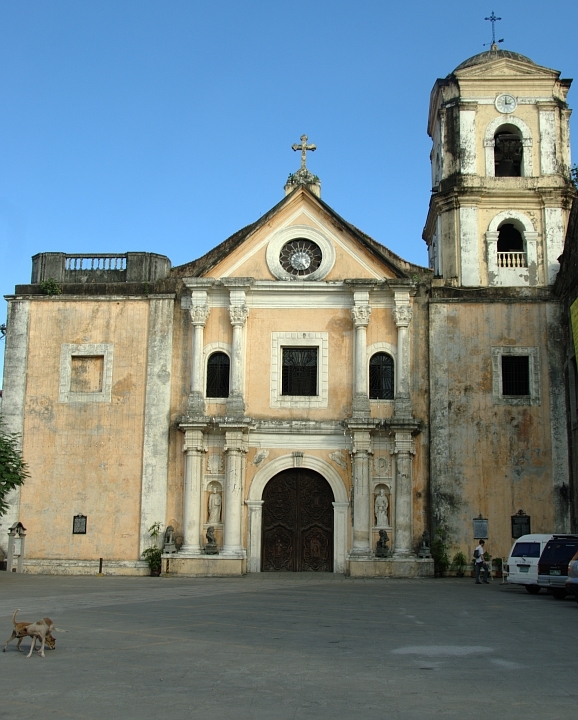San Agustin Manila

The present structure is actually the third Augustinian church erected on the site. The first San Agustin
Church was the first religious structure constructed by the Spaniards on the island of Luzon. Made of bamboo
and nipa, it was completed in 1571, but destroyed by fire in December, 1574 during the attempted invasion
of Manila by the forces of Limahong. A second church made of wood was constructed on the site. This was
destroyed in February 1583, in a fire that started when a candle set ablaze the drapes of the funeral bier
during the interment of the Spanish Governor-General Gonzalo Ronquillo de Peñalosa.
The interior of the San Agustín Church in Intramuros, with magnificent trompe l'oeil mural on its ceiling and
walls. The Augustinians decided to rebuild the church using stone, and to construct as well an adjacent monastery.
Construction began in 1586, from the design of Juan Macias. The structure was built using hewn adobe stones
quarried from Meycauayan, Binangonan and San Mateo, Rizal. The work proceeded slowly due to the lack of funds
and materials, as well as the relative scarcity of stone artisans. The monastery was operational by 1604, and
the church was formally declared complete on January 19, 1607, and named St. Paul of Manila. Macias, who had
died before the completion of the church, was officially acknowledged by the Augustinians as the builder of
the edifice.
San Agustin Church was looted by the British forces which occupied Manila in 1762 during the Seven Years' War.
In 1854, the church was renovated under the supervision of architect Luciano Oliver. Nine years later, on June
3, 1863, the strongest earthquake at that time, hit Manila leaving widespread destruction to the city with San
Agustin Church, the only public building left undamaged in the city. A series of strong earthquakes struck Manila
again in 1880 - from the 18th of July to the 20th. This time, the tremors left a huge crack on the left bell
tower of the church The crack was eventually repaired but the left tower was permanently removed as it appears
today. The church withstood the other major earthquakes that struck Manila before in 1645, 1699, 1754, 1796, 1825 and 1852.
On August 18, 1898, the church was the site where Spanish Governor-General Fermin Jaudenes prepared the terms
for the surrender of Manila to the United States of America following the Spanish-American War. During the Japanese
occupation of the Philippines during World War II, San Agustin Church was turned into a concentration camp for
prisoners. In the final days of the Battle of Manila, hundreds of Intramuros residents and clergy were held hostage
in the church by Japanese soldiers; many of the hostages would be killed during the three-week long battle. The
church itself survived the bombardment of Intramuros by American and Filipino forces with only its roof damaged,
the only one of the seven churches in the walled city to remain standing. The adjacent monastery however was
totally destroyed, and would be rebuilt in the 1970s as a museum under the design of architect Angel Nakpil.
